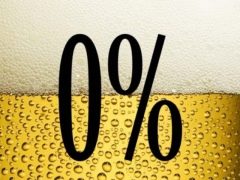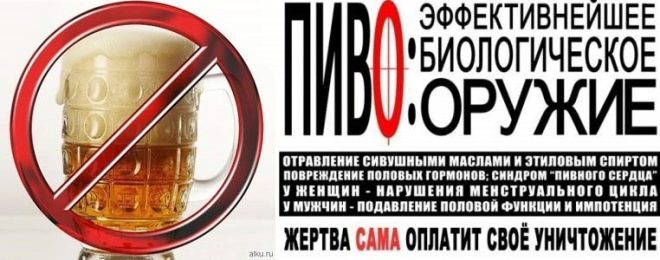Can teenagers be given non-alcoholic beer and at what age is it allowed to buy it?
Among the unusual questions that parents ask from time to time, a separate place is occupied by the question about the benefits or harm of non-alcoholic beer for children. Many believe that once a drink is called non-alcoholic, it is allowed for children. Is this true and can there be any benefit from it, we will tell in this material.
What is a drink?
Beer, which is called non-alcoholic, tastes very much like the drink of the same name with an alcohol content. It is no secret that many adults love this taste, and even young children often have a desire to try a little foamy drink from their parents' glass. Tastefulness - in malt and beer yeastwhich children, by the way, love and in a pure form.
Another question is whether the child needs to get used to the taste of beer. Most psychiatrists and narcologists are inclined to believe that previously getting used to these taste nuances can lead to increased alcohol consumption in adolescence and youth. If mom and dad have nothing against the child drank years to 30, you can start giving him non-alcoholic beer from an early age. All the rest should ask what really is a drink called non-alcoholic.
The inscription on the label, saying that the contents of the bottle or jar 0% alcohol, is actually a tricky trick. It is impossible to brew beer with a completely zero alcohol content.
Therefore, by default, only the integer is taken, the producers are trying to conceal shamefully.
In fact, in non-alcoholic beer from 0.5 to 1.2% alcohol, and this is a fact. Therefore, a child who is given such a drink still gets alcohol, but in small doses.
Alcohol from traditional brewed beer is removed at the plant either by evaporation or by the membrane method, or by using special yeasts, which are not able to process glucose into alcohol. The fluid called nonalcoholic foam contains water, hops, barley malt, and maltose syrup.
At first glance, the composition is rather innocent. However, do not assume that such a combination of ingredients can bring to the child (and adult) the body at least some benefit.
Benefit and harm
Speaking of benefits, it should be understood that benefits are evaluated solely for adults, not for children. A useful property is a vasodilator property, a small calorie content, which is important for dieters. Some fans claim that beer reduces the risk of getting cancer with illnesses, however experts in the field of oncology consider such statements to be ridiculous and ridiculous. The indisputable fact is that beer (and not only non-alcoholic) contains quite a large amount of vitamins of group B.
This is where the useful and questionably beneficial properties of the drink end. Begin harmful. These include:
- the content of harmful chemical compounds that are used to redeem alcohol and foam formation in the finished beverage during production;
- cobalt content exceeds all reasonable limits by 6 times;
- high probability of hormonal disorders due to the content of phytoestrogens in the drink;
- a high probability of developing a child's gastrointestinal diseases;
- the content of fusel oils as a mandatory attribute of the fermentation process, which affects the body toxicly;
- the presence of morphine (contained in hop cones, it is this substance that causes dependence with regular consumption).
Everyone knows that any beer, regardless of its alcohol content, increases the intensity of urination. Naturally, the child, after consuming such a drink, will often run to the toilet. Frequent urination is dangerous leaching from the children's body so valuable for it calcium and phosphorus.
It is especially dangerous to drink non-alcoholic beer to underage adolescents who have entered puberty. Phytoestrogens cause the development of boys in the female type, reduce reproductive functions. The girls may develop menstrual irregularities, followed by infertility.
Sale - age restrictions
With non-alcoholic beer in Russia there is a paradoxical situation. By law, it does not apply to alcoholic beverages, and therefore it is allowed to sell it even to children. However, the drink is not completely non-alcoholic. And even if the manufacturer is cunning with the indication of% on the label, then they do not cheat at all, pointing out on the label thatThe product is harmful to pregnant women, nursing mothers and children under 18.
On this basis, whether or not to sell non-alcoholic beer to a child or teenager, only the seller decides. In a strange way, this question is left to his discretion, and the state is essentially not regulated. Therefore, it is only from the conscience of the merchant, as well as his clear understanding of what this drink is, that your child can buy non-alcoholic beer in his 13-17 years of age.
If the drink is sold, the law will not be violated; if the seller refuses the child, he will also be right, as he follows the manufacturer’s recommendations on the packaging of the drink.
The tragedy of the situation lies in the fact that most sellers do not even think about the health of another child, and their own salary often depends on the amount sold and the amount of revenue. And therefore, with a probability of 95% and even more, a child can still buy beer, if he strongly wants. Not in one store, so in another.
findings
The child's body gets used much faster even to the minimum doses of alcohol that are contained in food or drink. He can not resist alcohol, because almost does not produce special enzymes that break down alcohol.
It is a mistake to give beer to a child both from medical and pedagogical points of view only because “it is necessary to form a culture of drinking” and “the forbidden fruit is sweet”. This is how sometimes mothers and fathers of adolescents argue, trying to appear democratic parents. The best thing is to show by example that alcohol is not at all interesting, not needed. Most children adopt exactly the pattern of behavior and attitudes towards alcohol that they see in their own family.
The method of prohibition, of course, is not the best that parents can apply. It is much more honest to exclude the use of a non-alcoholic beverage drink by younger children, and to children who are already able to understand causal relationships, to talk about the dangers of this drink and the possible consequences, including obesity, alcoholism, infertility, diseases of the kidneys, liver, mental and intellectual abilities.
Is it worth trying the fate and children's organism for endurance, giving it beer, even if it is non-alcoholic, because there are a lot of alternatives - milk, juice, compote, in extreme cases - juices. They are more palatable and healthy for the child.
And finally, let's take a fresh look at the popular methods of treatment with beer. Often you can find tips to give a warm beer for cough or small doses of non-alcoholic beer for a better sleep for a restless and hyperactive child. For cough there is a huge group of drugs, the resolution of which is allowed in childhood, there are traditional methods that do not imply the use of alcohol-containing liquids.
Sleep well contribute adequate load and mode day child, as well as light sedatives, including medicinal herbs permitted by age.Insomnia and coughing are not reasons for a child to create a platform for future problems associated with alcohol dependence. Children can not be treated with non-alcoholic beer.
Interesting facts about non-alcoholic beer can be seen in the next video.














